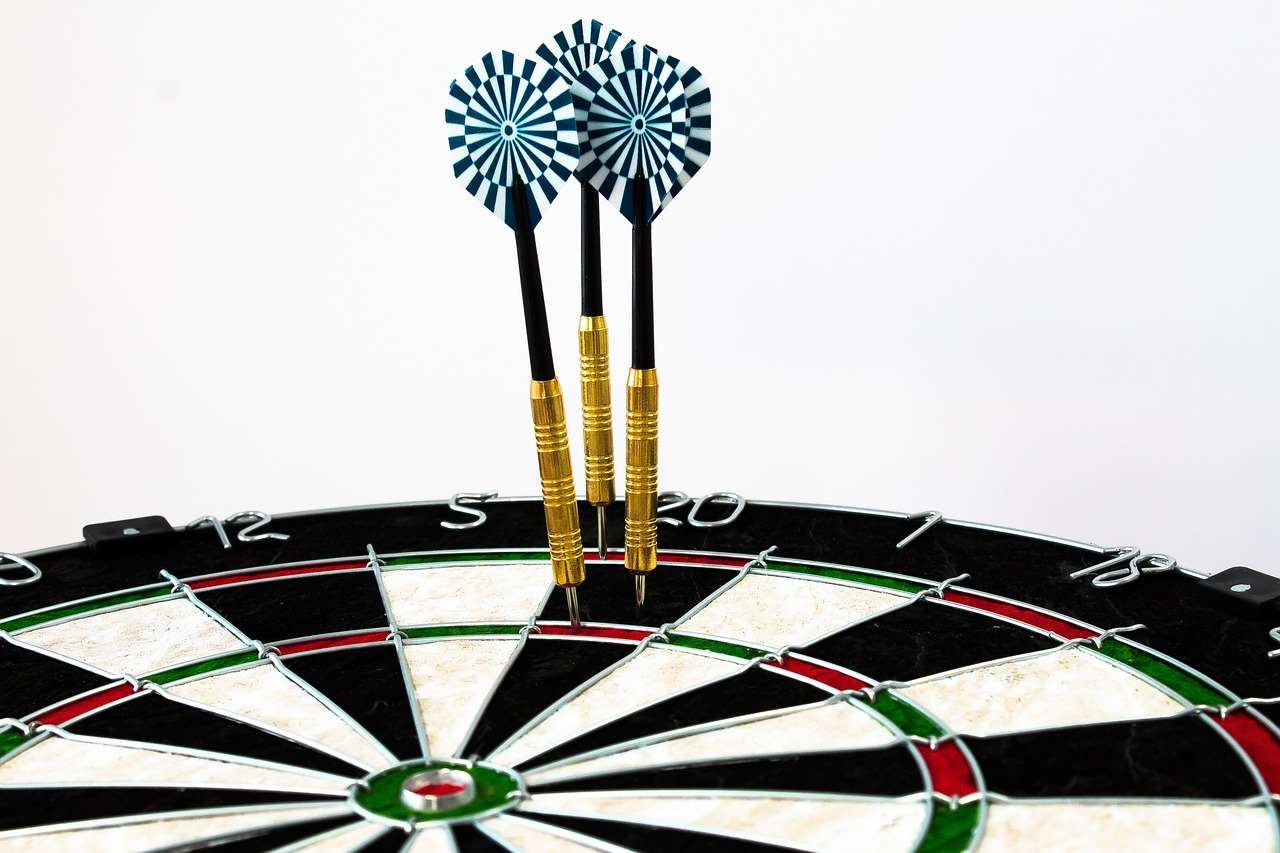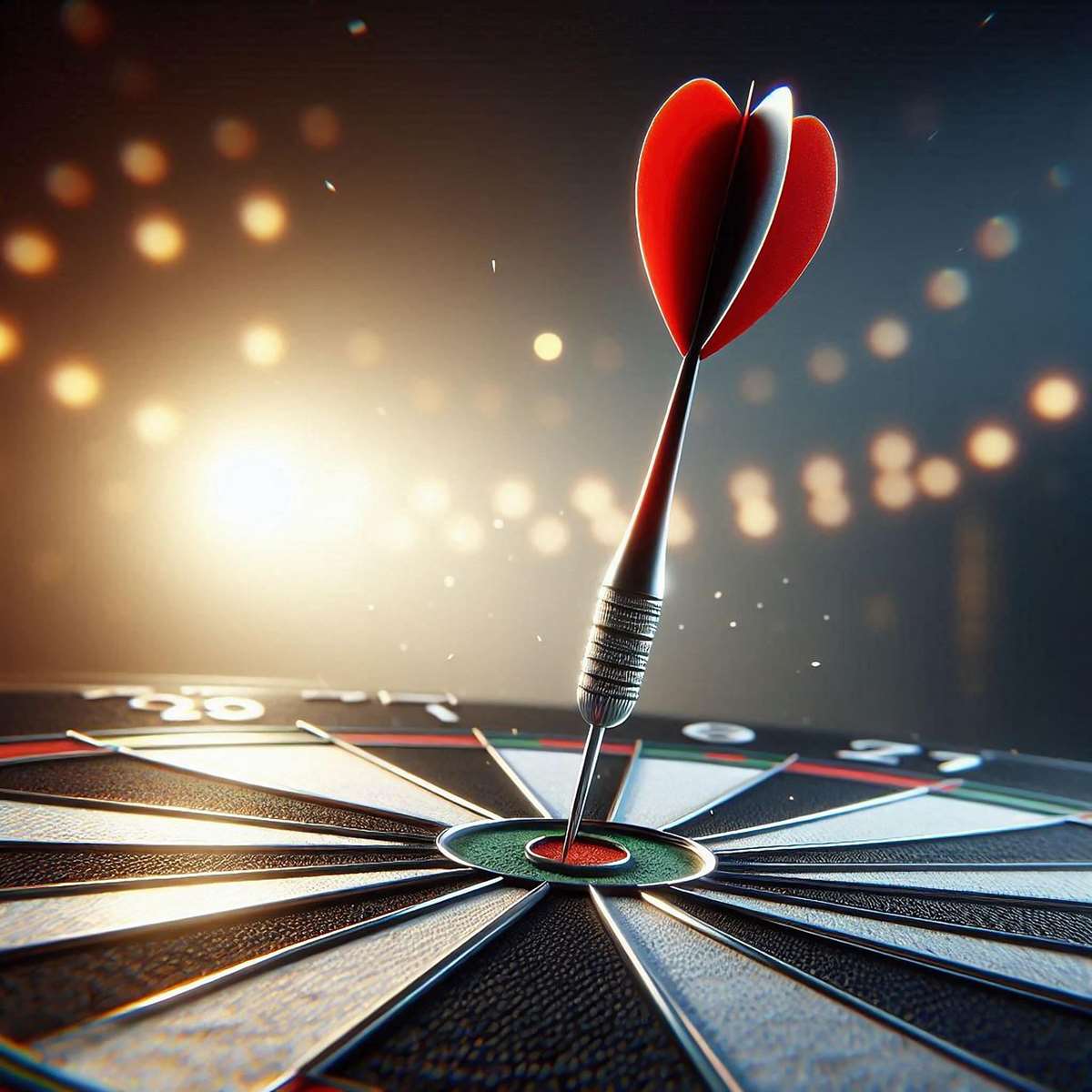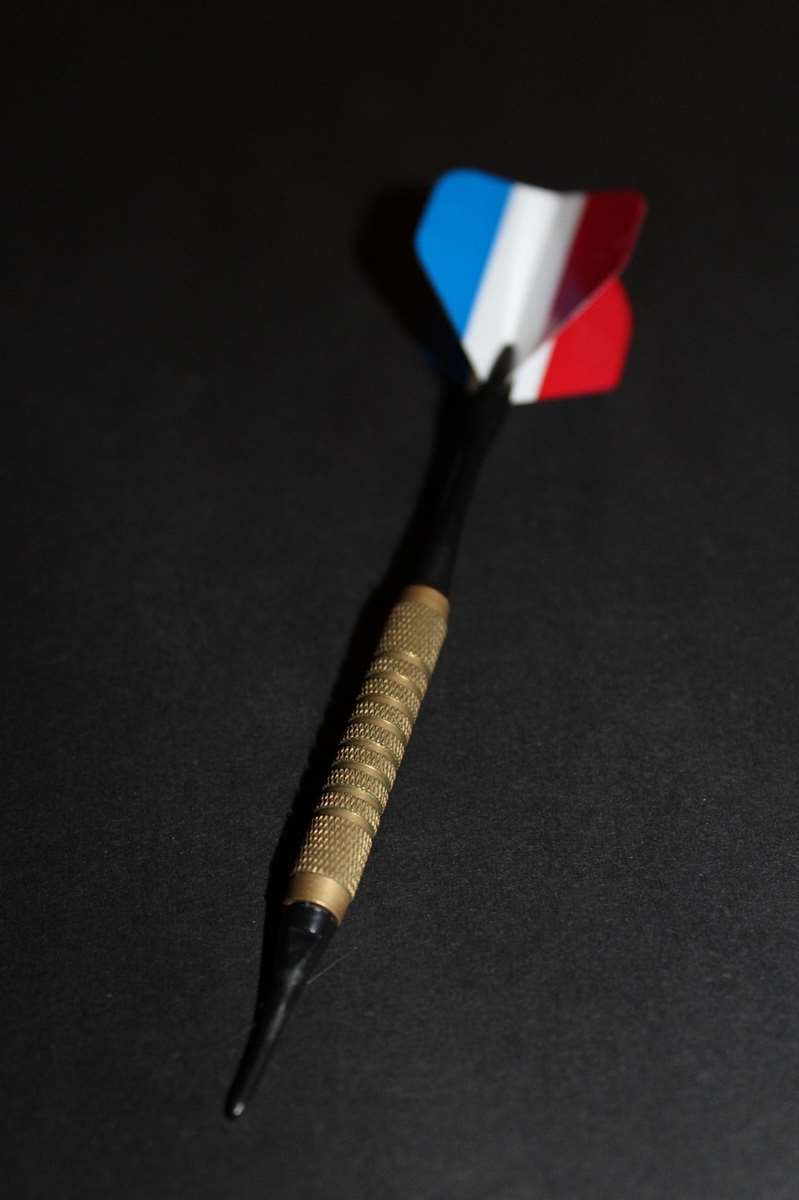In standard **Cricket darts**, each player throws **three darts per turn**. This article explores not just the answer to ‘How many darts per turn in Cricket?‘, but also dives into the nuances of the game, strategies, and variations that every dart enthusiast should know.
⚠️ Still Using Pen & Paper (or a Chalkboard)?! ⚠️
Step into the future! The Dart Counter App handles all the scoring, suggests checkouts, and tracks your stats automatically. It's easier than you think!
Try the Smart Dart Counter App FREE!Ready for an upgrade? Click above!
Understanding the Basics: Cricket Darts
Cricket is a strategic and popular dart game enjoyed by players of all skill levels. Unlike games like 501, Cricket focuses on **scoring specific numbers** rather than simply reducing a score to zero. It requires accuracy, strategy, and a bit of luck. Before we delve deeper, let’s reaffirm the fundamental rule: each player gets three throws, so **how many darts per turn in Cricket** is always three.

The Objective of Cricket
The primary objective in Cricket darts is to **”close” numbers** before your opponent. This means hitting a number – typically 20, 19, 18, 17, 16, 15, and the bullseye – three times. Once a number is closed, you score points each time you hit it, provided your opponent hasn’t closed it as well. The game ends when a player closes all the required numbers and has a higher score than their opponent, or when a player closes all numbers and is equal to or greater than their opponent.
The Standard Turn: Three Darts in Action
A standard turn in Cricket involves throwing all three darts. Players can aim for different targets with each dart, strategizing to close numbers, score points, or block their opponents. The question, ‘**How many darts per turn in Cricket?**’, is simple, but the execution is where the complexity and strategy come into play.
Strategic Considerations Per Dart
Each of the three darts offers a unique opportunity:
- First Dart: Often used to establish a number or close it for the first time.
- Second Dart: Can be used to further secure a number, start scoring, or react to an opponent’s play.
- Third Dart: The final opportunity to maximize the turn, whether it’s closing a number, adding to the score, or playing defensively.
Mastering these strategic considerations is a Basic Darts Fundamentals for Beginners, is key to improving your Cricket game.
Variations in Cricket Darts Rules
While the core principle of **three darts per turn** remains constant, Cricket has several variations that can influence the game. These variations often center around which numbers are in play or the specific scoring rules.

Cut-Throat Cricket
In Cut-Throat Cricket, the scoring is reversed. Instead of adding points to your score, you add points to your opponent’s score when you hit a closed number that they haven’t closed yet. This variation adds a layer of defensive strategy to the game, where players aim to punish their opponents for neglecting to close their numbers. The turn still comprises three darts; the change is in how those darts are used and affect the score.
Other Rule Modifications
Some variations might include:
- Selecting Different Numbers: Players can agree to use a different set of numbers beyond the standard 15-20 and bullseye.
- Handicap Systems: To level the playing field, more skilled players may have to close more numbers, or less skilled players might only need two hits to close a number. This means that **how many darts per turn in Cricket?** remains the same, but the impact of each dart can be altered.
Strategies to Maximize Your Turn in Cricket
Knowing that you have three darts, the challenge lies in using them effectively. Here are some strategies to help you maximize each turn:
Prioritize Closing Numbers
Your primary focus should be on closing numbers as quickly as possible. This prevents your opponent from scoring on those numbers and allows you to start accumulating points once you’ve closed them. Use your three darts to methodically work through the numbers, focusing on the ones that are most open.

Play Defensively
Keep an eye on your opponent’s progress and try to block them by closing numbers they are targeting. This is especially important in Cut-Throat Cricket, where adding points to their score can be devastating. Defensive play can significantly alter the dynamics even though **how many darts per turn in Cricket?** always stays at three per player.
Score When Possible
Once you’ve closed a number, take advantage by scoring as many points as possible. However, don’t neglect your defensive responsibilities. A balanced approach is often the most effective strategy.
Tips for Improving Your Cricket Game
Improving your Cricket game requires practice, strategy, and an understanding of the game’s nuances. Remember, regardless of experience, **how many darts per turn in Cricket?** always remains consistent at three.
Practice Regularly
Consistent practice is crucial for developing accuracy and consistency. Focus on hitting specific numbers and practicing different throwing techniques.

Analyze Your Performance
Track your scores and identify areas where you can improve. Are you consistently missing a particular number? Are you struggling with defensive play? Identifying your weaknesses is the first step towards addressing them.
Study Your Opponents
Pay attention to your opponent’s strategies and tendencies. Are they aggressive scorers or defensive players? Adapting your strategy based on your opponent’s style can give you a significant advantage. The number of darts remains static, but your approach needs to be flexible.
You may also be interested in adapting darts rules for beginners, to help encourage them and improve their game.
Frequently Asked Questions About Cricket Darts
Can the number of darts per turn be changed in Cricket?
In standard Cricket rules, the number of darts per turn remains fixed at three. However, in informal settings or when adapting the rules for beginners, you could technically modify this. But it is not standard.
What happens if a dart falls out of the board during a turn?
If a dart falls out of the board before it is officially retrieved, it does not count towards the score for that turn. The player does not get to re-throw the dart, meaning they’ll have only two throws to score or close numbers. The turn is still valid, but they have to continue the turn with only the darts remaining on the board.

What is the significance of closing numbers in Cricket?
Closing numbers is crucial in Cricket because it prevents your opponent from scoring on those numbers and allows you to start accumulating points. In cut-throat cricket, it prevents your opponent from adding points to *your* score.
Conclusion: Mastering the Three-Dart Turn
Understanding that ‘How many darts per turn in Cricket?‘ is always three is just the first step. Mastering the game involves strategic thinking, consistent practice, and adapting to different variations and opponents. By focusing on closing numbers, playing defensively, and scoring when possible, you can significantly improve your chances of success. Remember that practice and thoughtful decision-making will make you a formidable player, regardless of the format. Now, grab your darts and start honing your skills!
For more practice ideas, consider Fun dart game variations with modified rules, to help you expand your skillset.
Hi, I’m Dieter, and I created Dartcounter (Dartcounterapp.com). My motivation wasn’t being a darts expert – quite the opposite! When I first started playing, I loved the game but found keeping accurate scores and tracking stats difficult and distracting.
I figured I couldn’t be the only one struggling with this. So, I decided to build a solution: an easy-to-use application that everyone, no matter their experience level, could use to manage scoring effortlessly.
My goal for Dartcounter was simple: let the app handle the numbers – the scoring, the averages, the stats, even checkout suggestions – so players could focus purely on their throw and enjoying the game. It began as a way to solve my own beginner’s problem, and I’m thrilled it has grown into a helpful tool for the wider darts community.